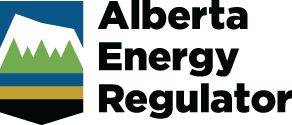How the AER’s leading technology helps us learn about human-caused earthquakes
Just like humans, not all earthquakes are the same. Earthquakes caused by human activities are called induced seismicity. Although uncommon, studies have shown that activities like hydraulic fracturing, wastewater disposal, and even hydrocarbon extraction can induce earthquakes.
It’s important that we understand why this happens and how we can manage it. Scientists at the Alberta Geological Survey (AGS), a branch of the AER, use over 50 monitoring stations to measure and research seismic activity across Alberta, and results of these monitoring stations are available to the public on the AGS earthquake dashboard.
Knowing the difference
Distinguishing between induced and natural earthquakes is difficult, which is why the AER has seismologists - earth scientists who specialize in the earth’s structure, behaviour, and evolution - who examine the characteristics of an earthquake to determine if it was induced.
“Suppose an earthquake occurs in an area where the fault* has historically low seismicity and is within a reasonable distance of suspected human activity. Moreover, the stress changes caused by human operations are significant enough to explain fault reactivation,” says Mauricio Canales, a specialist in induced seismicity at AGS. “If an event meets all mentioned characteristics, we can affirm that an earthquake was likely induced.”
*A fault is a fracture or zone of fractures where two rock blocks slide relative to one another.
The perfect storm
Although most of the earthquakes currently recorded in Alberta are induced, these types of earthquakes are rare because it takes a very specific set of conditions for them to occur.
Some wells inject fluid underground in a process called hydraulic fracturing. Fluid injection down a well near a pre-existing fault could lead to induced seismicity – like if you poured vinegar close to a crack containing baking soda.
For seismicity to occur, however, the fault must be critically stressed, which means that it is close to failing. Imagine that you unknowingly poured the vinegar on a surface that slants downwards, towards the baking soda.
In addition, the fluids injected must be placing enough stress, or force, to cause the fault to slip, creating an earthquake. Imagine that you kept on pouring more and more vinegar downhill towards the crack containing the baking soda. Eventually the two will meet, producing a fizz.
On their website, the AGS explains the two main processes by which fluid injection can change the stress on a fault: (1) injected fluids enter the fault, reducing the friction between rock blocks, causing the fault to slip, and (2) injected fluids increase the stress on the rocks surrounding the well leading to increased stress on the nearby fault, causing it to slip.

Looking back
The province has a long history of induced earthquakes, dating back to the 1970s. Previously, these events were related to developing Alberta’s conventional oil and gas resources. However, with the depletion of many of the province’s conventional reservoirs, activity has turned to developing unconventional oil and gas resources. These resources require stimulation techniques such as hydraulic fracturing. Since 2011, earthquake frequency in Alberta has increased primarily due to increased unconventional oil and gas activities.
Historically, earthquakes in Alberta have been low to moderate in magnitude. For information on recent cases of induced seismicity, see the AGS website under the heading “Induced Seismicity Cases.”
Gathering data on earthquakes
To gain information about the seismic hazard posed by oil and gas activities, AGS has established the Regional Alberta Observatory of Earthquake Studies Network (RAVEN).
RAVEN consists of 19 seismic stations across the province, primarily in areas that have seen an increase in seismic activity. These seismic stations consist of two barrels buried underground, with all the electronics needed for monitoring, including a seismometer, protected from extreme weather. The seismometer records ground vibrations and sends the information back to the AGS for analysis.

“The AGS operates a seismological network with the purpose of monitoring the earthquakes in Alberta. From this seismic monitoring, we can analyze the hazard posed by both natural and induced earthquakes in the province. In such a way, the AGS supports the regulatory efforts regarding induced seismic cases from the energy sector,” says Canales.
As a regulatory institution striving for excellence, the AER continually analyzes seismic events in the province, both those in the distant past and more recent ones, to develop better strategies to ensure the responsible and safe development of Alberta’s energy resources.
Take a look at this previous Resource article for more information about how the AER is monitoring seismicity in Fox Creek!


